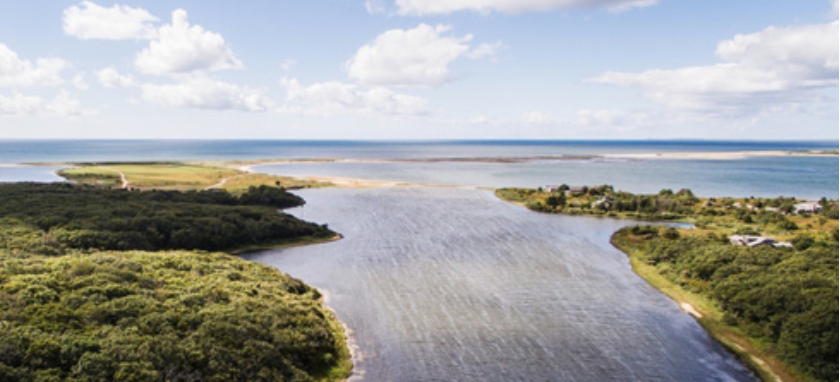Amid the bustling life of Massachusetts lies an ecological treasure trove known as Cape Cod and its Islands, including Martha’s Vineyard and Nantucket. With a blend of picturesque landscapes and diverse habitats, this area serves as a sanctuary for a wide array of wildlife and plant species. From sprawling beaches to dense woodlands, the region is a testament to the natural beauty and ecological diversity of the Northeastern United States. Whether a resident seeking a nature escape or a potential home buyer drawn to scenic landscapes, Cape Cod and the neighboring islands offer an unparalleled connection to nature’s wonders.
Beach and Water
Experience the serenity of the Long Point Wildlife Refuge on Martha’s Vineyard, boasting over 600 acres of beach, dune, and woodland habitats. Similarly, the Mashpee River Reservation provides a sanctuary for sea-run brook trout among its clean waters and trails. For a broader exploration, the Cape Cod National Seashore stretches across the peninsula, offering a vast array of ecosystems, from marine and estuary systems to freshwater bogs and swamps. Each location invites visitors into a unique aspect of the region’s natural beauty, whether it be the colorful Gay Head Cliffs on Martha’s Vineyard or the expansive Sandy Neck Great Salt Marsh Conservation Area.
Wildlife
For those planning a visit, these natural beauties offer more than just breathtaking views. The Long Point Wildlife Refuge, for example, welcomes visitors with facilities including public restrooms and picnic tables, ensuring a comfortable and enjoyable outing. Seasonal admission fees may apply, but the experience of walking through varied habitats and spotting diverse wildlife is invaluable. Similarly, the vast Cape Cod National Seashore provides countless recreational opportunities, from swimming to hiking, making it a must-visit for anyone looking to immerse themselves in nature. Detailed visitor information, such as admission fees and open hours, is readily available to help plan your visit to these ecological gems.
The ecological importance of Cape Cod and its islands cannot be overstated. These areas are crucial for the conservation of various habitats and wildlife species, serving as natural laboratories for environmental studies and conservation efforts. The Atlantic White Cedar Swamp Trail, for one, offers a glimpse into a delicate ecosystem, while the Monomoy National Wildlife Refuge is a vital breeding ground for numerous bird species. Through the dedication of conservation organizations and local communities, these areas continue to thrive as bastions of biodiversity.
The Community
Engagement in and support of these conservation efforts is not only beneficial for the environment but also enriches one’s understanding and appreciation of nature’s complexities. By visiting Cape Cod and its islands, individuals become part of a larger community endeavor to preserve these natural habitats for future generations. Whether participating in guided walks at the Wellfleet Bay Wildlife Sanctuary or exploring the historic Coskata-Coatue Wildlife Refuge, visitors play a role in the ongoing story of conservation and ecological stewardship in this unique region.
Cape Cod and its neighboring islands are more than just vacation destinations; they are a vital part of Massachusetts’ natural heritage. Offering a broad spectrum of wildlife and ecological diversity, these areas provide endless opportunities for exploration and learning. As we continue to support and preserve these precious environments, we ensure that they remain a source of wonder and inspiration for years to come. Whether you are a longtime resident or a new visitor, the natural wonders of Cape Cod and its islands await.
Source: visit-massachusetts.com
Header Image Source: visit-massachusetts.com






